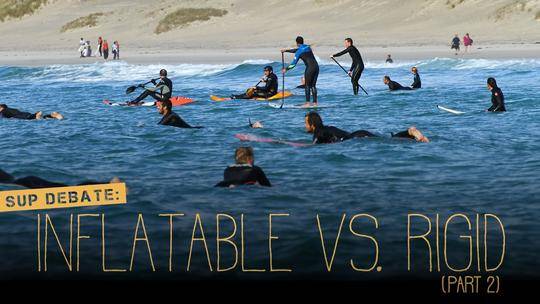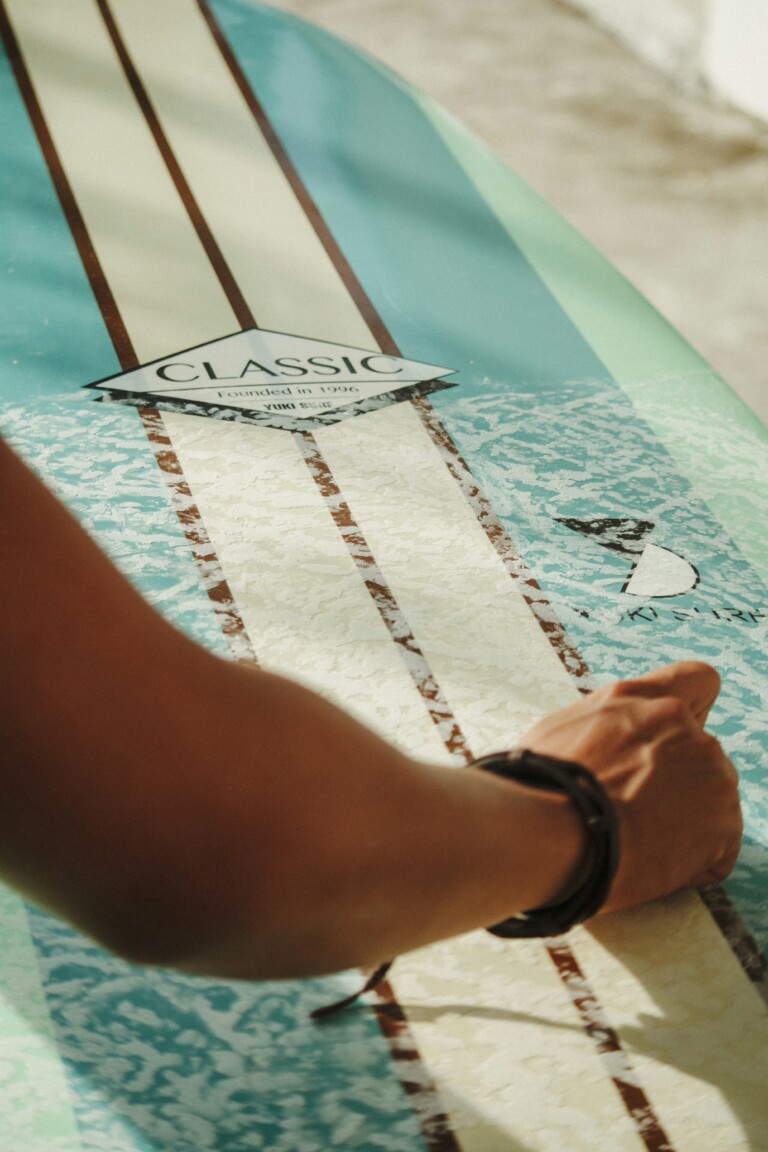In the previous article, we showed you the differences between performance and construction of inflatable versus rigid SUPs. However, there are a few more things you should consider before settling on which type of SUP to purchase.
Below, we discuss the pros and cons of travel with rigid and inflatable boards, storage concerns, and what repairs look like for each type.
TRAVEL WITH INFLATABLE AND RIGID SUPS
Whether or not you will want to travel with your SUP is actually a significant deciding factor in which type of board you should purchase.
Most people choose inflatable SUPs because they are easy to travel with. You can roll up your inflatable SUP in its storage bag, pay your luggage fee for it, and be on your way –it’s compact, usually weighs under 40 pounds, and doesn’t require special care.
The same cannot be said for rigid SUPS. If you live near a body of water, a rigid board is convenient. Do you need to fly? That’s not so easy. While there are distinct advantages to rigid SUPs, especially regarding performance or racing, traveling with a rigid SUP is harder. If you decide on a rigid SUP, there are a few things you will need to invest in.
TRAVELING CONCERNS WITH A RIGID SUP
For any trip on the road, you need to protect your board from road debris. This means a factory roof rack, tie-down straps, and the ability to get it on your vehicle. Smaller riders may find this problematic.
For longer distance trips or if you know you will encounter a construction zone, invest in a protective bag. Road debris can irreparably damage a SUP.
You can fly with your rigid SUP. However, be prepared to purchase a “coffin-like” bag to protect your board. Also, you will probably be charged oversized luggage fees, which can be costly. You will need to call ahead to make sure that the airline you’ve booked allows luggage the size of a 10-12 foot SUP.
STORAGE CONCERNS FOR SUPS
Depending on where you live, storage may or may not be the deciding factor when choosing what type of SUP you want to invest in.
Storage for inflatable SUPs is just as easy as traveling. Make sure it’s dry, roll it up, and store it in the bottom of a closet or corner of the garage out of the sunlight.
Before you purchase a rigid SUP, measure where you’re planning on storing it, including any stairs! You will need a space that you can maneuver a 10-12 foot SUP into place. Stairs, garages, and basements can be tricky. You will also likely need a set of mounts to keep your SUP off the ground (and storing it horizontally along a wall is often more accessible). These mounts must be able to withstand approximately 60 pounds, which will safely support your rigid SUP.
THINKING ABOUT REPAIRS
With a rigid SUP, bumps, and scratches are just going to happen. The good news is that most of these aren’t a big deal; they’re just cosmetic issues. However, deeper cracks or holes can affect the structural integrity of your board. You will need to get these looked at immediately. You can either use a DIY-repair kit or bring the SUP down to us to get a guaranteed repair by a professional.
Inflatable SUPs all come with a repair kit in the event of a small hole, although these are rare, If you encounter the seams coming apart, that’s a manufacturer issue that often falls under a warranty claim.
For more extensive repairs on inflatable SUPs, either find our orange tent on the beach or visit us at San Diego Surfing School and we will get you fixed right up!
WHICH TYPE OF SUP IS BEST FOR YOU?
Ultimately, this depends on you. You will decide what type of performance you are looking for. Any inflatable SUP that calls for 14 PSI or higher will be comparable to a rigid SUP for most users. If you are looking for speed, racing, or surfing, a rigid SUP will be a better choice.
Before making your decision, decide ahead of time if travel, storage, and repairs are significant concerns for you. These things can significantly affect your SUP ownership experience.
Lastly, chat with us about it! We are here to help, and we want to see you out enjoying the water, regardless of which SUP will be better for you. Come visit us!
Click here for Part 1
















